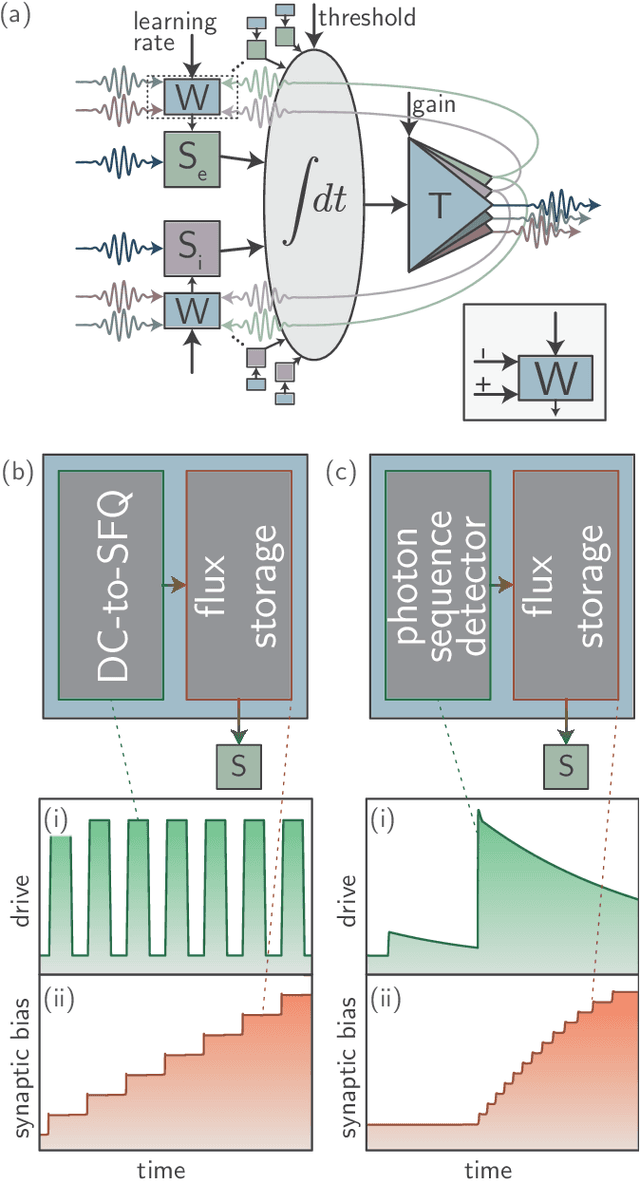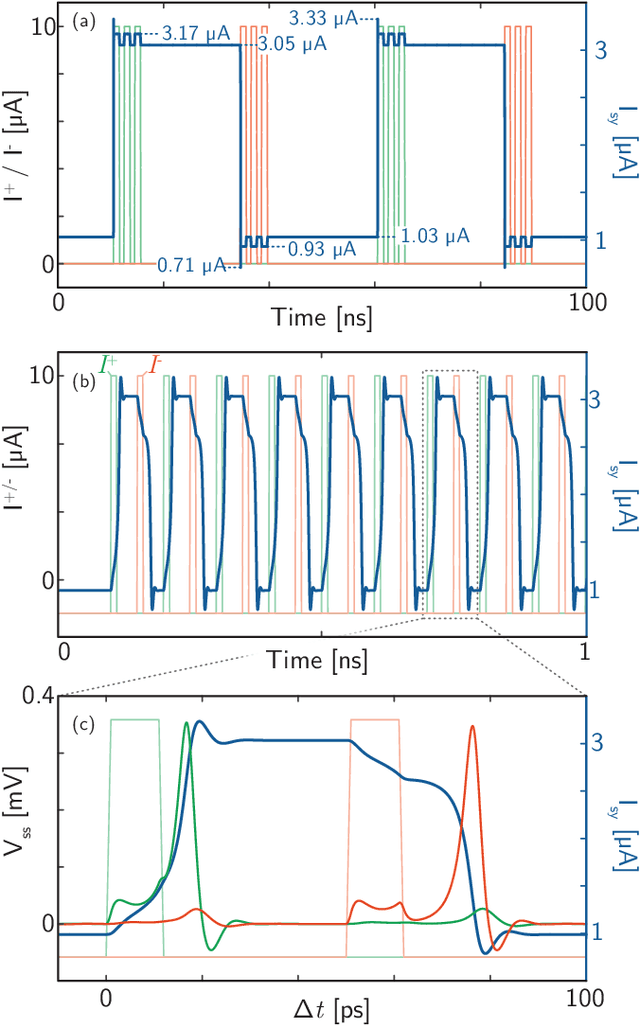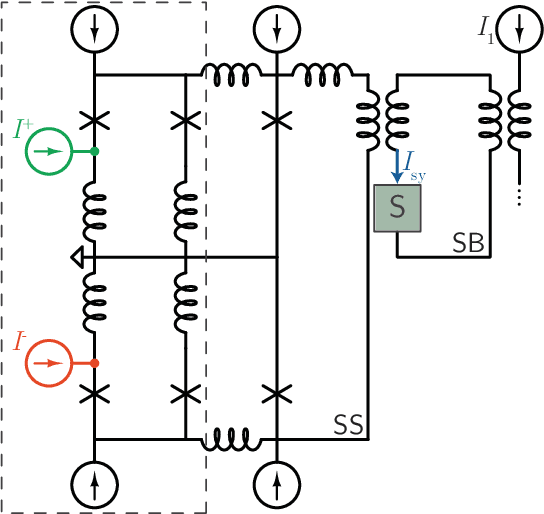Michael L. Schneider
Superconducting Optoelectronic Neurons III: Synaptic Plasticity
Jul 03, 2018



Abstract:As a means of dynamically reconfiguring the synaptic weight of a superconducting optoelectronic loop neuron, a superconducting flux storage loop is inductively coupled to the synaptic current bias of the neuron. A standard flux memory cell is used to achieve a binary synapse, and loops capable of storing many flux quanta are used to enact multi-stable synapses. Circuits are designed to implement supervised learning wherein current pulses add or remove flux from the loop to strengthen or weaken the synaptic weight. Designs are presented for circuits with hundreds of intermediate synaptic weights between minimum and maximum strengths. Circuits for implementing unsupervised learning are modeled using two photons to strengthen and two photons to weaken the synaptic weight via Hebbian and anti-Hebbian learning rules, and techniques are proposed to control the learning rate. Implementation of short-term plasticity, homeostatic plasticity, and metaplasticity in loop neurons is discussed.
Superconducting Optoelectronic Neurons II: Receiver Circuits
May 15, 2018



Abstract:Circuits using superconducting single-photon detectors and Josephson junctions to perform signal reception, synaptic weighting, and integration are investigated. The circuits convert photon-detection events into flux quanta, the number of which is determined by the synaptic weight. The current from many synaptic connections is inductively coupled to a superconducting loop that implements the neuronal threshold operation. Designs are presented for synapses and neurons that perform integration as well as detect coincidence events for temporal coding. Both excitatory and inhibitory connections are demonstrated. It is shown that a neuron with a single integration loop can receive input from 1000 such synaptic connections, and neurons of similar design could employ many loops for dendritic processing.
 Add to Chrome
Add to Chrome Add to Firefox
Add to Firefox Add to Edge
Add to Edge